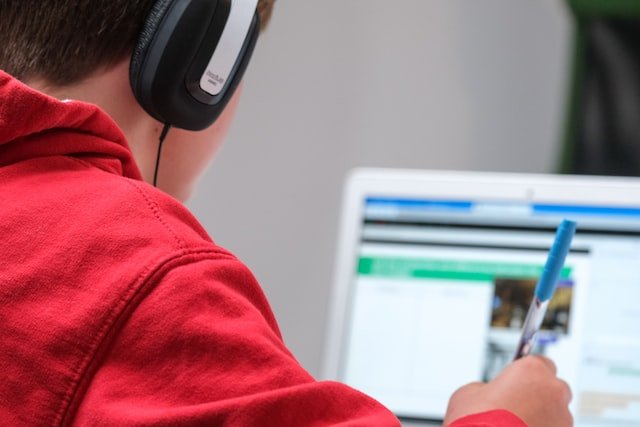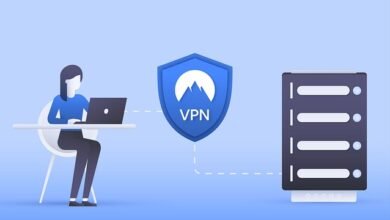Distance learning – 10 rules for conducting online lessons

Distance learning – 10 rules for conducting online lessons
Almost overnight the pandemic changed the way teaching was done. Due to isolation and limited movement, knowledge discovery, communication, and collaboration are becoming more difficult.
Learning environment changes with automation difficulties. There was a need to search for new solutions in the field of education – distance learning was one of them.
In the spring of 2020, Polish education had about eight days to implement distance education.
The pace of complete change in the formula and model of teaching application in school and university has led to many problems resulting mainly from lack of knowledge and experience . How should distance learning be performed ?
Distance learning – 3 main problems
• No motivation
Undoubtedly, one of the most difficult tasks education organizers face is awakening motivation and creating interest in participating in remote classes.
Too many distracting objects and situations in the environment can make it difficult to focus – causing cognitive activity to be redirected to other content.
It is precisely the excitement of the listener’s participation during lessons at school or seminars at university that can be a major challenge.

• No social interaction
A significant disadvantage of distance learning is the lack of social interactions, so it is characteristic of a school class or group of students.
Satisfying the need for socialization within a group requires the use of special integration measures, the application of which takes time.
It is essential to provide students with support that gives them a sense of security and connections with other participants in the learning process.
It is good practice to create a friendly space for conversation outside the educational classroom, for example during shifts organized by teachers.
Working remotely, without direct contact, it is sometimes enough to know there is someone to talk to.
• Difficulty in assessing the learner
It turns out that one of the problems with distance learning is the inability to assess a student’s actual knowledge.
The listener needs information about the progress of his work – it is necessary to learn. Thanks to the assessment, the student knows what his learning process is and can have an impact on it.
In addition, the teacher also needs evaluation, so that he knows how the teaching is progressing, how to help the students and how to adapt their teaching to their needs.
Distance Learning – Top 10 Rules
Ten principles that must be followed by a teacher who organizes remote work for learners:
1. Check the infrastructure and equipment that the learners have. Try to adapt your way of carrying out the activities to the situation they find themselves in.
2. Determine the general principles for conducting distance learning activities in a given subject – including general principles for communication (in the case of younger learners – also with their parents).
3. Think over and plan your classes – you can prepare a lesson/lesson scenario for this. Determine the objectives of the classes and the way to achieve them. Presenting the principles of evaluating the educational process (methods for verifying the achievement of goals).
4. Try to enrich educational activities with motivational/interactive elements for the student (increasing or stimulating learners’ interest in the educational content).
5. Communication about learning progress. Provide learners with feedback on the learning outcomes achieved. Remember positive reinforcement and motivation.

6. Recommend the use of various sources of information (existing literature). Try to get the listeners to use different sources of knowledge – the Internet, literature, magazines.
7. Remember about interaction between learners. If possible, design learner collaboration for assignments – creating a virtual classroom or group can be helpful. Provide a space for communication so that the group can share knowledge and work together.
8. When you teach at school – work with your parents (guardians). Remember – they are your important allies.
9. Prepare the instructions (student worksheet) – What should the student know? Why? how? Ensure that information reaches everyone in the class/group.
10. Listen and draw conclusions. Write down students’ observations and concerns. solving problems.
The implementation of the above principles will determine the effectiveness of the educational process.

Distance learning – something worth remembering
The specific isolation caused by the pandemic requires mutual understanding and empathy . In this case, it will be of great importance to find arguments that will inspire students, in the new conditions created by the pandemic, and prompt them to engage in the discovery of meanings and build the motivation to acquire knowledge.
So what should every e-teacher remember? About the correct management of the student learning process and the organization of educational situations that require work / activity.
For this purpose, it is worth taking into account the unusual circumstances of the performance as well as the psychophysical abilities and previous knowledge of the learners (reflective thinking should be stimulated and creativity stimulated).
It is also appropriate to plan learners’ activities so that they do not require the use of technology.
Educators should combine synchronous communication with asynchronous work (always strictly define the deadline for completing the task).
In addition, it is a good idea to draw up a schedule for the implementation of individual tasks and estimate the total workload of the listener – here it is important to remember that the requirements must be realistic.



